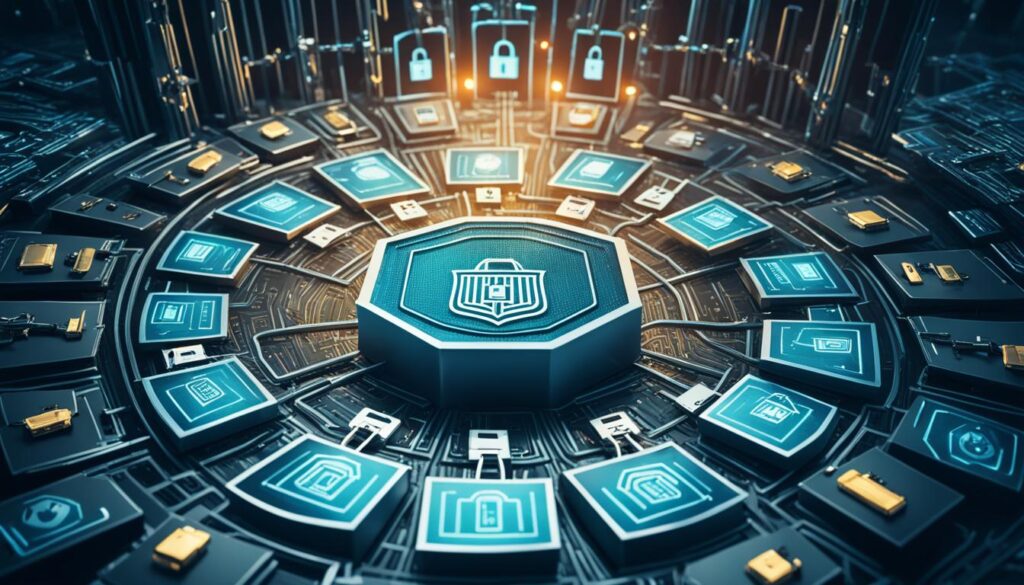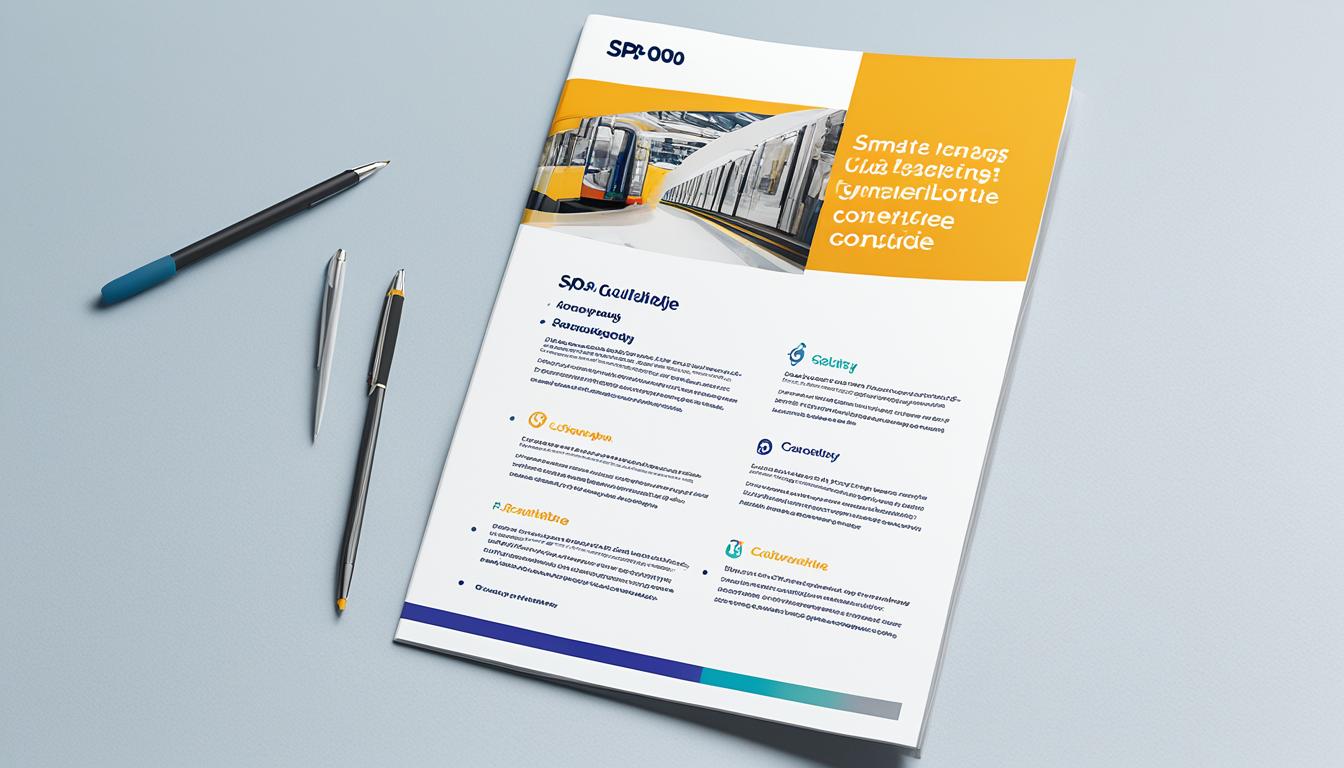The cybersecurity landscape is constantly evolving, and small and medium-sized enterprises (SMEs) are increasingly becoming targets of cyber threats. To effectively manage their cybersecurity risks and protect their valuable assets, SMEs should consider implementing the SP800-37 guideline developed by NIST (National Institute of Standards and Technology). This comprehensive framework provides SMEs with a step-by-step guide to enhance their cybersecurity posture and comply with industry best practices. In this article, we will explore the easy-to-follow SP800-37 guideline tailored specifically for SMEs, offering actionable insights and practical advice to help SMEs safeguard their operations and maintain a secure digital environment.
Here are some key insights we’ll cover in this article:
– Understanding the NIST Risk Management Framework (RMF)
– Step-by-step process for implementing the SP800-37 guideline
– Categorizing information systems and selecting security controls
– Implementing and monitoring security controls
– Integrating third-party risk management into the NIST RMF
– Enhancing SME cybersecurity with the SP800-37 guideline
With our expertise in cybersecurity and compliance, we will provide you with valuable recommendations and best practices to ensure your SME is well-protected against cyber threats. Let’s get started on strengthening your cybersecurity posture.
Understanding the NIST Risk Management Framework (RMF)
The NIST Risk Management Framework (RMF) is a comprehensive process that organizations can use to manage their cybersecurity risks effectively. It provides a systematic approach to identifying, assessing, and mitigating risks associated with information systems. The RMF consists of several steps, including categorizing information systems, selecting security controls, implementing controls, assessing their effectiveness, authorizing the system, and monitoring the controls on an ongoing basis. SMEs can leverage the RMF to develop a robust cybersecurity program tailored to their unique needs.
Effective cybersecurity risk management is essential for organizations to protect sensitive information, maintain business continuity, and safeguard their reputation. With the increasing number and complexity of cyber threats, it has become imperative for organizations, including small and medium-sized enterprises (SMEs), to adopt robust cybersecurity practices.
The NIST RMF provides a structured and standardized framework to assist organizations in managing their cybersecurity risks. By following the RMF, organizations can identify and prioritize risks, implement appropriate controls, and monitor the effectiveness of their cybersecurity measures. This proactive approach enables organizations to stay ahead of evolving threats and protect their critical assets.
Implementing the NIST RMF involves a series of distinct steps that guide organizations through the risk management process. These steps ensure that cybersecurity is integrated into every aspect of an organization’s operations, from system design and development to day-to-day operations and maintenance. By following these steps, organizations can establish a strong security posture and effectively mitigate cyber risks.
The NIST RMF begins with categorizing information systems, which helps organizations understand the potential impact of a security breach and prioritize their risk management efforts. Based on the categorization, organizations can then select and implement appropriate security controls to protect their systems and data. Regular assessments are conducted to evaluate the effectiveness of the implemented controls, and any identified deficiencies are addressed promptly. Continuous monitoring ensures that controls remain effective over time and helps organizations detect and respond to emerging threats.
By leveraging the NIST RMF, SMEs can create a robust cybersecurity program that aligns with industry best practices and regulatory requirements. This framework provides SMEs with the guidance and structure to develop and maintain a proactive cybersecurity posture, protecting their systems, data, and overall business operations.
Key Benefits of the NIST Risk Management Framework (RMF)
- Comprehensive and systematic approach to managing cybersecurity risks
- Standardized framework for organizations to develop a robust cybersecurity program
- Enables organizations to identify, assess, and prioritize risks effectively
- Assists in the selection and implementation of appropriate security controls
- Facilitates ongoing monitoring and evaluation of cybersecurity measures
- Ensures compliance with industry standards and regulatory requirements
- Allows organizations to stay ahead of evolving cyber threats
By understanding and implementing the NIST Risk Management Framework, organizations can enhance their cybersecurity posture and effectively protect their critical assets.
Step 1: Categorizing Information Systems
One of the fundamental steps in implementing the SP800-37 guideline is categorizing the information systems within your small and medium-sized enterprise (SME). By assessing the types of information stored and processed in your organization, such as personally identifiable information (PII) or financial data, you can gain valuable insights into potential risks and prioritize your risk management efforts accordingly.
Information system categorization plays a crucial role in understanding the potential impact of a security breach and identifying the necessary controls to mitigate those risks effectively. To assist SMEs in this process, the National Institute of Standards and Technology (NIST) provides guidelines in SP800-37 that help map types of information and information systems to appropriate security categories.
To categorize your information systems, consider the following factors:
- The sensitivity of the information: Assess the level of sensitivity associated with the information stored or processed within your systems. This could include confidential data, trade secrets, or customer financial information.
- The potential impact of a security breach: Evaluate the potential consequences of a security incident on your organization, including financial loss, reputational damage, legal implications, and operational disruptions.
- The regulatory requirements applicable to your industry: Take into account any industry-specific regulations or compliance standards that may dictate the level of security controls and protection measures required for your information systems.
By categorizing your information systems, you establish a foundation for effective risk management and enable the implementation of appropriate security controls tailored to the specific needs of your SME. Let’s move on to the next step in the SP800-37 guideline: selecting security controls.
| Benefits of Categorizing Information Systems: | NIST SP800-37 Guidelines |
|---|---|
| 1. Improved Risk Assessment: Categorization allows for a better understanding of the risks associated with different types of information systems. It helps identify vulnerabilities and prioritize risk mitigation efforts. | Access the most reliable guidelines: NIST provides comprehensive guidance through the SP800-37 document to assist SMEs in categorizing information systems effectively. |
| 2. Targeted Control Implementation: Categorization enables the selection and implementation of appropriate security controls based on the identified risks. This ensures resources are allocated effectively. | Compliance with Industry Standards: By following the NIST guidelines, SMEs can align their practices with industry standards, enhancing their cybersecurity posture and credibility. |
| 3. Efficient Resource Allocation: Prioritizing risk management efforts based on the categorization results allows SMEs to allocate their resources effectively, focusing on areas with greater potential impact. | Promoting Consistency: Following a standardized process, as outlined in the SP800-37 guideline, helps SMEs establish consistent categorization practices and maintain a disciplined approach to risk management. |
Step 2: Selecting Security Controls
Once we have categorized our information systems, it is essential to select appropriate security controls to protect our valuable systems and data. These controls come in various forms, including administrative, physical, and technical measures, all designed to safeguard the confidentiality, integrity, and availability of our information.
When it comes to choosing the right security controls, we can turn to the NIST SP800-53 publication. This comprehensive guide provides SMEs with a wide range of security controls that can be tailored to their specific risk assessments and cybersecurity needs.
Let’s take a look at some of the key security control families outlined in NIST SP800-53:
- Access Control: These controls focus on managing access to our systems, ensuring that only authorized individuals can use or modify sensitive information. Examples include user authentication, authorization mechanisms, and logical access restrictions.
- Awareness and Training: These controls emphasize the importance of educating our employees about cybersecurity best practices. By raising awareness and providing effective training, we can help our team members understand their roles and responsibilities in protecting our systems and data.
- Data Protection: These controls help us secure our data from unauthorized access or disclosure. They include encryption, data backup and recovery processes, and secure data disposal methods.
- Incident Response: These controls focus on our ability to detect, respond to, and recover from cybersecurity incidents. They include incident reporting procedures, incident response planning, and coordination with external organizations.
These are just a few examples of the security controls available to us. By carefully selecting the controls that align with our risk assessments and addressing our specific security needs, we can effectively mitigate cybersecurity risks and enhance our overall security posture.
Step 3: Implementing Security Controls

Once the necessary security controls have been selected, it is imperative for SMEs to implement them effectively within their organization. This involves incorporating the controls into their information security program to ensure the protection of their systems and data.
Implementing security controls is a critical step in bolstering the cybersecurity posture of SMEs. By integrating these controls into their overall security program, SMEs can establish a comprehensive framework that safeguards against potential threats and vulnerabilities.
SMEs have the option to either utilize their own staff for implementing the controls or outsource certain control functions to managed security service providers (MSSPs). This decision can vary based on the organization’s resources and requirements.
Regardless of the approach chosen, it is vital for SMEs to ensure that the selected controls are effectively utilized to minimize the risks associated with cyber threats. Implementation should be carried out in a systematic and thorough manner, adhering to industry best practices, and aligned with the guidelines provided in NIST SP800-37.
Benefits of Implementing Security Controls:
- Enhanced Protection: Implemented controls contribute to a more robust security posture, safeguarding SMEs against potential cyber threats.
- Reduced Risk: By implementing the appropriate controls, SMEs can minimize vulnerabilities and mitigate the impact of cybersecurity incidents.
- Compliance: Implementation of security controls helps SMEs comply with industry standards, regulations, and frameworks, such as NIST SP800-37, ensuring that their cybersecurity practices align with best practices.
- Improved Business Continuity: Effective security controls aid in maintaining smooth operations, reducing the likelihood of disruptions or data breaches that can adversely impact business continuity.
| Key Steps for Implementing Security Controls | Best Practices |
|---|---|
| 1. Develop a detailed implementation plan | – Assign responsibilities for implementing each control – Establish timelines for implementation – Allocate necessary resources |
| 2. Conduct training and awareness programs | – Educate employees on security policies and procedures – Promote a culture of cybersecurity awareness |
| 3. Regularly review and update security controls | – Stay up-to-date with emerging threats and vulnerabilities – Continuously evaluate the effectiveness of controls – Modify controls as needed |
| 4. Monitor and respond to security incidents | – Implement incident response plans – Regularly review logs and alerts – Take immediate action to mitigate threats |
Step 4: Assessing Security Controls
Assessing the effectiveness of implemented security controls is crucial to ensure that they are functioning as intended and providing the desired level of protection for your organization. To evaluate the performance of your security controls, you can utilize various methods, including:
- Cybersecurity Assessment: Conduct a comprehensive assessment of your cybersecurity measures to identify any areas of weakness or potential vulnerabilities.
- Vulnerability Scanning: Employ vulnerability scanning tools to systematically identify and analyze vulnerabilities in your systems and networks.
- Penetration Testing: Conduct targeted penetration tests to simulate real-world attack scenarios and determine the resilience of your security controls.
By engaging third-party resources to perform these assessments, you can benefit from an unbiased and comprehensive analysis of your security controls. Third-party experts bring a fresh perspective and specialized knowledge, ensuring a thorough evaluation of your cybersecurity posture. This evaluation enables you to make informed decisions and take proactive steps to address any identified weaknesses or gaps in your security controls.
| Assessment Method | Purpose | Benefits |
|---|---|---|
| Cybersecurity Assessment | To identify weaknesses and vulnerabilities in your security controls. | – Comprehensive evaluation – Identification of potential risks and threats – Insights for improvement |
| Vulnerability Scanning | To systematically identify and analyze vulnerabilities in your systems and networks. | – Detection of potential weaknesses – Proactive identification of vulnerabilities – Enhanced risk management |
| Penetration Testing | To simulate real-world attack scenarios and assess the resilience of your security controls. | – Evaluation of the effectiveness of controls – Uncovering potential vulnerabilities – Validation of security measures |
By regularly assessing your security controls, you can stay vigilant and proactive in managing your organization’s cybersecurity risks. These assessments provide valuable insights that enable you to make educated decisions regarding the enhancement and optimization of your security measures.
Step 5: Updating Information System Controls
Based on the findings of the security control assessment, SMEs need to develop an action plan to address any identified security deficiencies. This step involves updating the information system controls to mitigate the risks posed by these deficiencies. SMEs should prioritize the remediation of vulnerabilities based on their risk levels and allocate resources accordingly. Regular updates and monitoring of controls ensure that SMEs maintain a robust cybersecurity posture.
When updating information system controls, it is essential to consider the cybersecurity risk management aspect. By addressing the identified security deficiencies, SMEs can effectively mitigate potential risks and strengthen their overall security framework. These updates play a vital role in improving the organization’s ability to prevent and respond to cyber threats.
During the update process, it is crucial to address not only the obvious security deficiencies but also the underlying causes that may give rise to these vulnerabilities. A comprehensive approach to updating information system controls involves evaluating the organization’s overall security stance and making necessary adjustments to ensure a resilient cybersecurity infrastructure.
Allocating Resources for Risk Mitigation
After identifying security deficiencies, SMEs must allocate resources strategically to prioritize risk mitigation efforts. The allocation of resources should be based on the level of risk associated with each vulnerability. By focusing on high-risk areas, SMEs can effectively reduce the likelihood of successful cyberattacks.
In the table below, we provide an example of different security deficiencies and their associated risk levels. This can serve as a basis for prioritizing resources and determining the order in which information system controls should be updated:
| Security Deficiency | Risk Level |
|---|---|
| Lack of regular software updates | High |
| Weak access controls | Medium |
| Inadequate employee cybersecurity training | Low |
By allocating resources based on risk levels, SMEs can address the most critical security deficiencies first, minimizing the potential impact of cyber incidents.
Regular Updates and Continuous Monitoring
Updating information system controls is not a one-time task; it requires continuous effort and vigilance. SMEs must establish a regular update cycle to ensure that their controls remain effective and relevant in the face of evolving cybersecurity threats.
Additionally, continuous monitoring of the updated controls is essential to detect and respond to any emerging security deficiencies. This can involve the use of cybersecurity tools, such as intrusion detection systems and security incident and event management (SIEM) solutions, to provide real-time insights into the organization’s cybersecurity posture.
Updating information system controls is an ongoing process that requires a proactive approach to cybersecurity risk management. By addressing security deficiencies and allocating resources strategically, SMEs can strengthen their cyber defenses and maintain a secure digital environment.
Step 6: Monitoring Security Controls
Continuous monitoring of security controls plays a critical role in maintaining a strong cybersecurity posture for SMEs. By implementing ongoing surveillance mechanisms, organizations can detect any changes in the threat landscape and ensure that their controls remain effective over time. Monitoring security controls involves tracking their performance, identifying potential security incidents, and proactively responding to emerging threats.
One effective way to monitor security controls is through continuous monitoring, which involves real-time evaluation and analysis of system activities and events. SMEs can leverage automated tools and technologies to facilitate this process, allowing for quick and efficient threat detection and risk management. These tools provide alerts and notifications for any unexpected changes or anomalies that may impact the organization’s cybersecurity posture.
Continuous monitoring enables SMEs to identify and respond to security incidents promptly, minimizing the potential impact on their operations. It provides valuable insights into the overall health of the organization’s cybersecurity defenses and helps identify areas for improvement.
By continuously monitoring security controls, SMEs can:
- Proactively detect and mitigate potential security breaches or unauthorized activities
- Identify and address any vulnerabilities or weaknesses in their cybersecurity defenses
- Ensure compliance with regulatory requirements and industry best practices
Monitoring security controls also allows SMEs to measure the effectiveness of their risk management efforts. Regular assessments and evaluations help organizations gauge the performance of their controls, identify areas of concern, and make informed decisions regarding risk mitigation strategies.
Overall, continuous monitoring of security controls is essential for maintaining a robust and resilient cybersecurity posture. It enables SMEs to stay one step ahead of evolving threats, safeguard their systems and data, and effectively manage their cybersecurity risks.
Integrating Third-Party Risk Management into the NIST RMF

Recognizing the importance of third-party risks, small and medium-sized enterprises (SMEs) should incorporate third-party risk management into the NIST Risk Management Framework (RMF). By doing so, SMEs can proactively address potential vulnerabilities arising from third-party relationships and ensure the security of their supply chain.
To effectively integrate third-party risk management into the NIST RMF, SMEs should follow a systematic approach:
- Identify third parties with access to the organization’s systems or data. This includes vendors, contractors, and other external entities that have a role in the organization’s operations.
- Conduct a comprehensive risk assessment of these third parties. Evaluate their security practices, data handling protocols, and overall cybersecurity posture to determine the level of risk they pose to the organization.
- Implement appropriate controls to mitigate the identified risks. Establish contractual obligations, security requirements, and monitoring mechanisms to ensure third parties adhere to the organization’s cybersecurity standards.
- Regularly review and assess third-party security practices. Conduct periodic audits and assessments to verify compliance and identify any new or emerging risks that may arise from ongoing partnerships.
- Implement access monitoring and control measures. Continuously monitor the activities and access privileges of third parties to detect any unauthorized or suspicious behaviors that may indicate a potential security breach.
By integrating third-party risk management into the NIST RMF, SMEs can effectively manage the risks associated with their supply chain and enhance their overall cybersecurity posture. This proactive approach helps protect sensitive data, ensure business continuity, and safeguard customer trust.
Enhancing SME Cybersecurity with the SP800-37 Guideline
By following the SP800-37 guideline, small and medium-sized enterprises (SMEs) can significantly enhance their cybersecurity posture and effectively manage their cybersecurity risks. This step-by-step approach, specifically tailored for SMEs, provides a comprehensive framework for implementing cybersecurity best practices and ensuring compliance with industry standards.
The SP800-37 guideline empowers SMEs to develop a robust cybersecurity program that safeguards their critical systems and sensitive data. By implementing the recommended practices, SMEs can effectively mitigate potential cyber threats and reduce the risk of devastating cyber-attacks.
Aligning with the NIST SP800-37 framework equips SMEs with the necessary tools and strategies to proactively address emerging cyber risks. By integrating risk management practices into their day-to-day operations, SMEs can effectively identify vulnerabilities, implement proactive measures, and maintain a secure digital environment.







